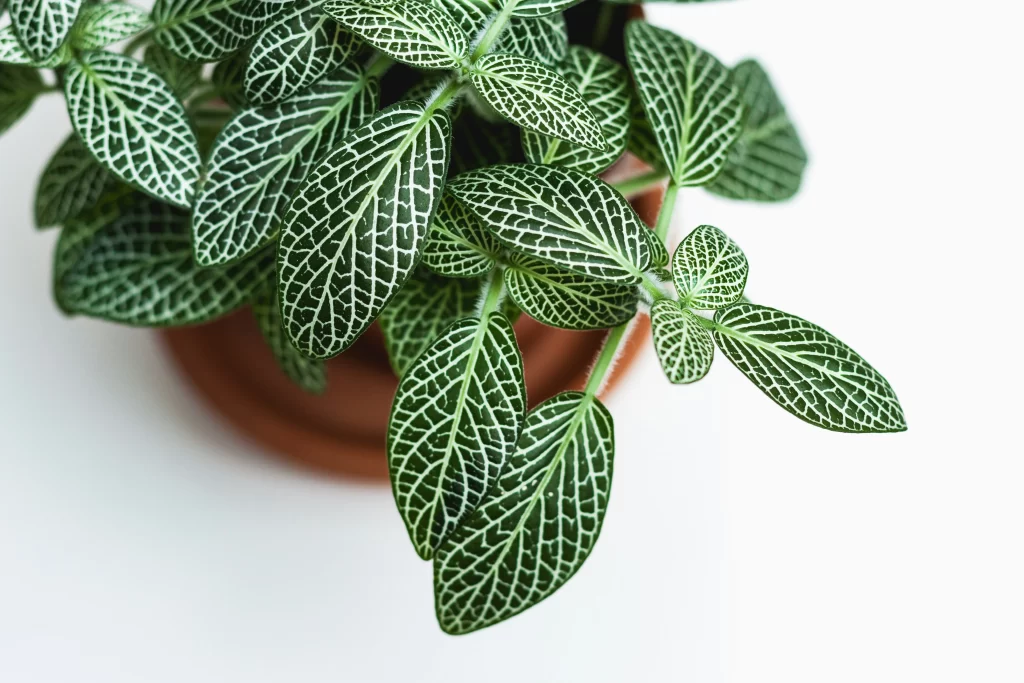Introduction
If you’re a plant enthusiast, home gardener, or interior designer, you’ve likely encountered the stunning beauty of the prayer plant (Maranta leuconeura). Known for its vibrant, decorative foliage and unique leaf movements, this tropical houseplant can transform any space into a lush oasis. In this blog post, we’ll explore the fascinating world of prayer plants, offering practical care tips, interesting facts, and reasons why this plant should be a staple in your home or design projects.
What is a Prayer Plant?
Prayer plants are native to the tropical forests of Brazil and are recognized for their broad, oval leaves adorned with intricate patterns of green, red, and purple. The name “prayer plant” comes from the plant’s ability to fold its leaves upward in the evening, as if in prayer. This movement, known as nyctinasty, is a response to changes in light and humidity.
Unique Features of Prayer Plants
Prayer plants boast several intriguing characteristics that set them apart from other houseplants. Their leaves not only exhibit striking patterns but also have a velvety texture that adds a touch of elegance. The plant’s ability to move its leaves throughout the day makes it a dynamic addition to any indoor garden. Additionally, prayer plants produce small, white flowers, although they are rare when grown indoors.
Benefits of Having a Prayer Plant
Prayer plants offer more than just aesthetic appeal. They are known to improve air quality by filtering out toxins and releasing oxygen. Their lush foliage can also create a calming atmosphere, making them perfect for stress relief. For interior designers, prayer plants provide a versatile option for adding a touch of nature to various design styles, from modern to bohemian.
Ideal Growing Conditions
To keep your prayer plant thriving, it’s essential to replicate its natural habitat. These plants prefer bright, indirect light but can tolerate low-light conditions. Avoid placing them in direct sunlight, as it can scorch their leaves. Prayer plants thrive in high humidity, so consider using a humidifier or placing a water-filled tray near the plant to maintain moisture levels.
Watering Your Prayer Plant
Prayer plants like to stay lightly and consistently moist. Before watering, touch the top of the soil to ensure it feels slightly dry. Overwatering can lead to root rot, while underwatering can cause the leaves to curl and brown. Aim to water your prayer plant every 1-2 weeks, adjusting based on the season and humidity levels.
Soil and Fertilization
Well-draining soil is crucial for prayer plants. Use a potting mix that contains peat, perlite, and vermiculite for optimal results. Fertilize your plant every 4-6 weeks during the growing season (spring and summer) with a balanced, water-soluble fertilizer. Reduce feeding in the fall and winter when the plant’s growth slows down.
Common Issues and Solutions
Prayer plants are relatively low-maintenance, but they can encounter a few common problems. Yellowing leaves may indicate overwatering, while brown leaf tips often result from low humidity. Pests like spider mites and mealybugs can also affect your plant. Regularly inspect the foliage and treat any infestations with insecticidal soap or neem oil.
Propagating Prayer Plants
Propagating prayer plants is a rewarding process that allows you to expand your collection or share with friends. The most common method is division. Carefully separate the plant at the roots and pot each section in fresh soil. You can also propagate using stem cuttings placed in water until roots develop, then transfer them to soil.
Incorporating Prayer Plants in Home Decor
Prayer plants are incredibly versatile and can enhance any interior design. Place them in decorative pots on shelves, tables, or hanging baskets to create visual interest. Their vibrant foliage pairs well with neutral color palettes, adding a splash of color and texture. Use them as statement pieces in living rooms, bedrooms, or home offices.
Seasonal Care Tips
Each season brings different challenges and needs for your prayer plant. In the spring and summer, focus on regular watering and feeding to support growth. During the fall, gradually reduce watering and fertilization. In winter, ensure the plant is protected from drafts and cold temperatures, and consider using grow lights to compensate for reduced natural light.
Enhancing Your Plant’s Growth
To encourage robust growth, occasionally rotate your prayer plant to ensure all sides receive equal light. Gently wipe the leaves with a damp cloth to remove dust and allow for better photosynthesis. Prune any dead or yellowing leaves to maintain the plant’s health and appearance.
The Unique Behavior of the Prayer Plant
One of the most intriguing aspects of the prayer plant is its nyctinastic movement. This means that its leaves move up and down in response to the light cycle, folding up at night and opening during the day. This fascinating behavior not only adds to its charm but also serves as a natural indicator of its well-being.
What You’ll Learn in This Guide
In this comprehensive guide, we’ll cover all aspects of prayer plant care, from watering schedules to light requirements, soil types, and common issues you might encounter. By the end of this blog post, you’ll be equipped with all the knowledge you need to keep your prayer plant thriving.
Choosing the Right Spot for Your Prayer Plant
Finding the perfect spot for your prayer plant is crucial for its health and growth. These tropical beauties prefer environments that mimic their natural habitat, which means indirect sunlight and high humidity.
Light Requirements
Prayer plants do best in bright, indirect light. Too much direct sunlight can scorch their leaves, while too little light can cause them to lose their vibrant colors. A north or east-facing window is usually ideal.
Humidity and Temperature
Prayer plants thrive in humid conditions. If your home is on the dry side, consider using a humidifier or placing a tray of water near the plant to boost humidity. They also prefer temperatures between 65-75°F (18-24°C).
Avoiding Drafts
Keep your prayer plant away from drafts, whether they’re from windows, doors, or air conditioning vents. Sudden temperature changes can stress the plant and affect its health.
Watering Your Prayer Plant
Proper watering is key to keeping your prayer plant healthy. These plants like to stay lightly and consistently moist, but not waterlogged.
How Often to Water
Check the top inch of the soil before watering. If it feels dry, it’s time to water. During the growing season (spring and summer), you may need to water more frequently. In the dormant season (fall and winter), reduce the watering schedule.
Water Quality
Prayer plants are sensitive to the chemicals found in tap water, such as chlorine and fluoride. Using distilled or rainwater can help prevent leaf burn and other issues.
Drainage Tips
Ensure your pot has good drainage to prevent water from pooling at the bottom, which can lead to root rot. A well-draining soil mix is also essential.
Soil and Repotting
The right soil and potting conditions can make a significant difference in your prayer plant’s health.
Best Soil Mix
A well-draining, peat-based potting mix is ideal for prayer plants. You can also add perlite or coarse sand to improve aeration.
When to Repot
Prayer plants don’t require frequent repotting. Typically, repotting every 2-3 years is sufficient. Look for signs like roots growing out of the drainage holes to know when it’s time.
How to Repot
When repotting, gently remove the plant from its current pot, shake off excess soil, and place it in a new pot with fresh soil. Water thoroughly after repotting.
Feeding Your Prayer Plant
Like all plants, prayer plants need nutrients to grow and thrive. However, they are not heavy feeders.
Choosing the Right Fertilizer
A balanced, water-soluble fertilizer is best. Look for one with equal parts nitrogen, phosphorus, and potassium (e.g., 10-10-10).
How Often to Fertilize
During the growing season, fertilize your prayer plant every 4-6 weeks. In the dormant season, you can reduce feeding to every 8-10 weeks.
Signs of Over-fertilization
Yellowing leaves and slow growth can be signs of over-fertilization. If this happens, flush the soil with water to remove excess nutrients and adjust your feeding schedule.
Common Issues and How to Fix Them
Even with the best care, you may encounter some issues with your prayer plant. Here are some common problems and how to address them.
Yellowing Leaves
Yellow leaves can be a sign of overwatering, underwatering, or nutrient deficiencies. Check your watering schedule and ensure you’re using the right fertilizer.
Brown Leaf Tips
Brown tips are often caused by low humidity or chemical exposure. Increase humidity levels and use distilled or rainwater to avoid this issue.
Pests
Prayer plants can be susceptible to pests like spider mites and aphids. Regularly inspect the leaves and treat any infestations with insecticidal soap or neem oil.
Propagating Your Prayer Plant
One of the joys of owning a prayer plant is the ability to propagate it and share it with friends or expand your collection.
Methods of Propagation
The most common method is stem cuttings. You can also propagate through division during repotting.
Step-by-Step Guide to Propagation
- Cut a healthy stem with at least one node.
- Place the cutting in water or moist soil.
- Keep it in a warm, humid environment until roots develop.
Caring for New Plants
Once the new plant has established roots, treat it like a mature prayer plant, ensuring proper light, water, and humidity conditions.
The Importance of Tasting Notes
Each prayer plant shipment comes with tasting notes to enhance your understanding and appreciation of the different varieties. These notes provide insights into the plant’s characteristics, care tips, and more.
Reading Tasting Notes
Tasting notes can help you identify specific traits, such as leaf coloration and growth habits, making it easier to provide tailored care.
Using Tasting Notes for Care
Use the information provided in the tasting notes to adjust your care routine, ensuring each plant gets the conditions it needs to thrive.
Sharing Tasting Notes
Share your experiences and tasting notes with other plant enthusiasts to build a community of knowledgeable and passionate plant lovers.
Exclusive Deals for Subscribers
Being a part of our community comes with its perks. Subscribers get access to exclusive deals and offers.
Monthly Discounts
Enjoy monthly discounts on new plant shipments, accessories, and more.
Early Access to New Varieties
Be the first to know about and purchase new prayer-plant varieties as they become available.
Community Events
Join exclusive events, webinars, and Q&A sessions with plant experts.
Building a Community of Plant Lovers
One of the best parts of owning a prayer-plant is connecting with other enthusiasts.
Online Forums and Groups
Join online forums and social media groups to share tips, ask questions, and show off your plants.
Local Meetups
Look for local plant meetups and events to meet other plant lovers in your area.
Sharing Your Journey
Document your plant care journey on social media and inspire others to join the prayer-plant community.
Community and Support for Prayer-Plant Lovers
Joining a community of fellow prayer-plant enthusiasts can provide valuable support and inspiration. Social media groups, online forums, and local gardening clubs are excellent resources for sharing tips, asking questions, and showcasing your thriving plants. Engaging with others who share your passion can make your plant-growing journey even more enjoyable.
Prayer-plants are a captivating and beneficial addition to any home or design project. Their unique features, coupled with their relatively easy care requirements, make them a favorite among plant enthusiasts, home gardeners, and interior designers. By following the tips and advice outlined in this blog post, you’ll be well on your way to creating a thriving, beautiful oasis with your prayer-plant.
Ready to take your plant collection to the next level? Explore more about the fascinating world of houseplants and join our community of passionate plant lovers. Happy planting!








